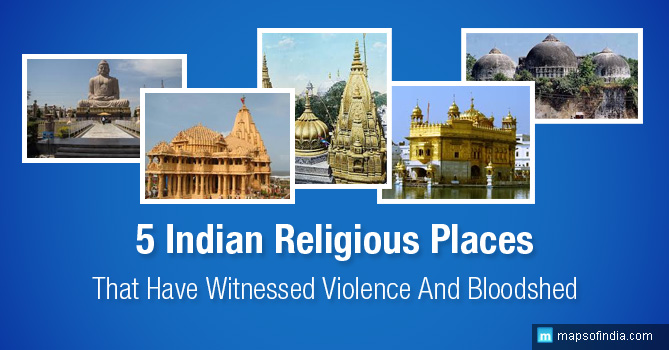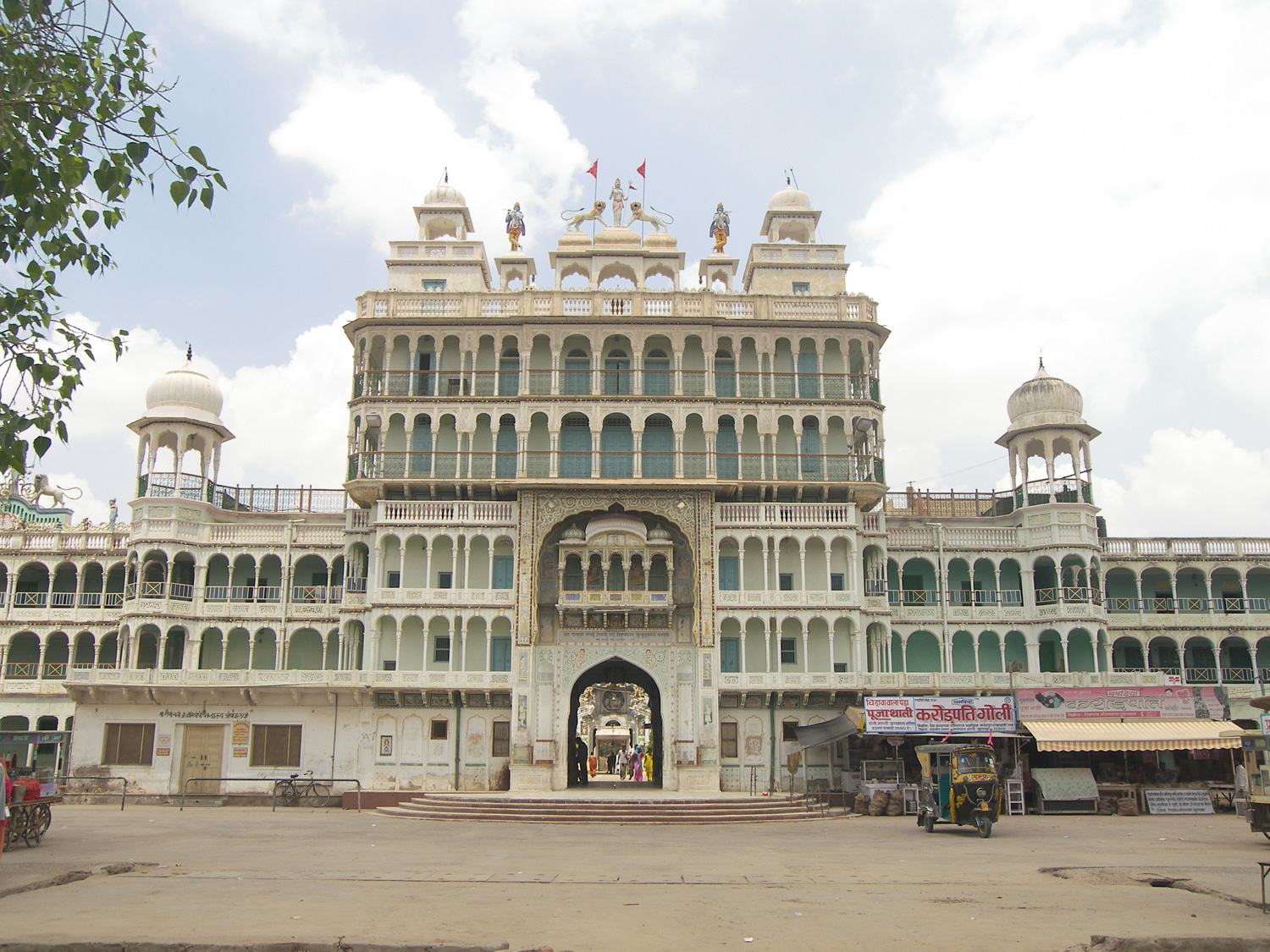Spirituality is the soul of India. Our country is a splendid land which embraced every religion, every faith that landed on its shores. Not only did it receive and adopt numerous religions, India is the birthplace of some of the significant religions of the world – Hinduism, Sikhism, Jainism, and Buddhism. It is this religions diversity, however, that has been used to cause strife and dissent among the Indians. Some of the most sacred sites and places of worship in the country have also been witness to heart wrenching violence and bitter disputes. Even as we list 5 of these religious places in India which have been at the heart of some kind of dispute or attack, we utter a prayer for peace, for religious harmony and benevolence in our beautiful country.
Ram Janmabhoomi – According to Hindu scriptures Ram, the avatar of Lord Vishnu and the king of Ayodhya, was born in this sacred site some 900,000 years ago. Archeological evidence endorses the fact that a great city stood here in the 7th century AD. In 1528, Mir Babri, the general of Mughal Emperor Babur constructed a mosque at the spot. Ever since, the site has been at the centre of a very violent conflict between the Hindu and Muslim communities. The 1992 clashes over Ram Janmabhoomi became one of the worst instances of communal riots in the country. The courts have not been able to deliver a verdict that is acceptable to both communities or to draw them closer.
Golden Temple – The Golden Temple, Sri Harimandir Sahib, is the holiest among Sikh Gurdwaras of the world. It is the seat of the Akal Takht – the highest authority in matters of dispute resolution and policy making for the Sikhs. The Golden Temple was occupied by Sikh separatist militants Jarnail Singh Bhindranwale and his followers who stocked up on arms (possibly with an intention to launch an armed attack). The temple complex was stormed by the Indian Army in June 1984 and the militants were neutralized. Following this operation many Punjabi households and establishments were raided and Sikhs (suspected of being sympathetic to Bhindrawale) persecuted. The wounds caused by this operation still remain raw in our consciousness.
Kashi Vishwanath Temple – The temple dedicated to Lord Shiva, the Kashi Vishwanath Mandir, is located in what is the epicentre of Hindu spirituality – the city of Varanasi (Kashi) on the banks of the River Ganga. Not only is this temple one of the 12 sacred Jyotirlingas, it is also the holiest Shiva temples according to the Hindus. The history of this temple, however, is marred by numerous incidents of violence and religious persecution. In 1124 , Muhammad Ghori pillaged and destroyed the temple. Even as the locals undertook reconstruction, Qutb-ud-din Aibak once again wrought havoc. In 1351, the temple was destroyed again by the sultan of Delhi, Firuz Shah Tughlaq. In 1669, the temple was destroyed again by Mughal emperor Aurangazeb who ordered the construction of the Gyanvapi mosque in its place. The current temple was built in 1780 by Ahilya Bai Holkar of Indore (Marartha ruler) on a nearby site.
Somnath Temple – The Somnath Temple of Gujarat, dedicated to Shiva, is another one of the 12 Jyotirlingas – important sites of Shiva worship, having found mention in the Rig Veda itself. The temple is believed to be one of the holiest and wealthiest shrines of ancient India. It is probably this very wealth that attracted Mahmud of Ghazni who arrived to plunder the temple in 1025. He looted an incredible amount of wealth and is also believed to have broken the Jyotirlinga. The years to come would be marked by one raid after the other. In 1299, Sultan Allauddin Khilji’s troops raided the temple; in 1395, the temple was destroyed once again by Zafar Khan, the Delhi Sultanate’s governor of Gujarat. In 1451, it was demolished once more by Mahmud Begada. In recent times the Portuguese attacked and destroyed the temple in 1546 and Emperor Aurangazeb again destroyed it in 1665. Each time the temple has been reconstructed by the faithful and by the devout of the country.
Bodh Gaya – Buddhism is the religion of peace and tolerance and the Bodh Gaya, the place where Lord Buddha gained enlightenment – is a universal symbol of harmony. This place too, has failed to remain untouched by violence and bloodshed. In July 2013, a series of low intensity bomb blasts rocked the Mahabodhi Temple complex. The blasts left some monks injured. The Indian Mujahideen a radical Islamic terrorist organization, is believed to have been responsible for these blasts.
Read More





